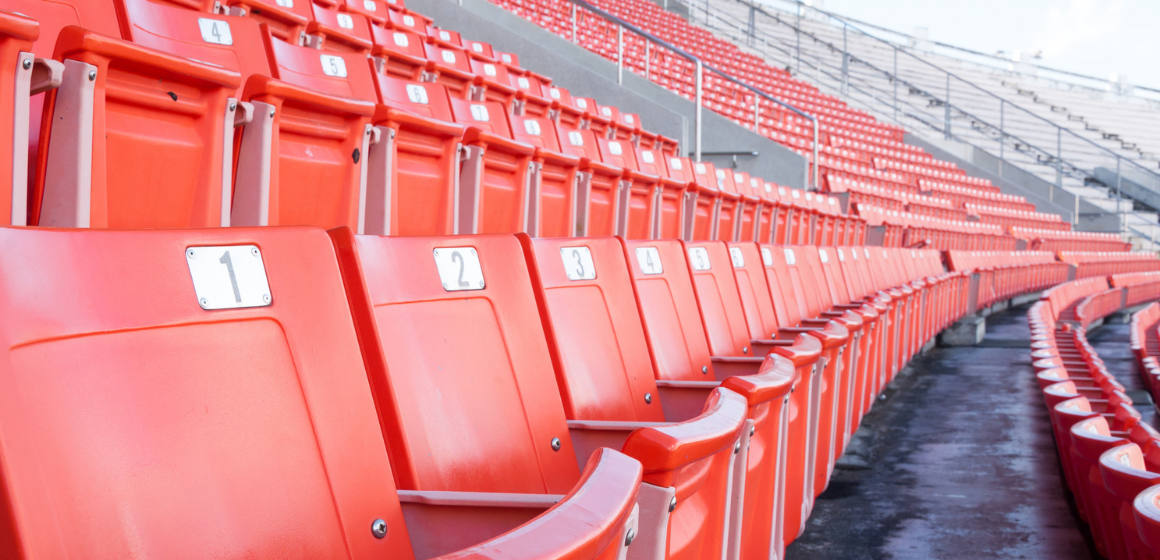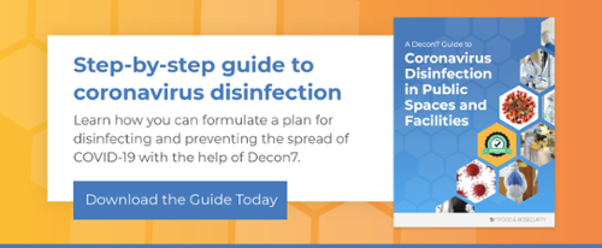
As we gain a better understanding of how COVID-19 spreads and more people get vaccinated, the world is gradually returning to pre-pandemic activities, including sports at all ages and levels. Of course, returning to sports safely—for athletes, spectators, broadcasters, and venue employees—is a high priority. The more venue owners and team managers can do to maintain a clean environment, the safer everybody will be.
How COVID-19 Has Affected Sports in the US
The pandemic has had sweeping effects on athletic events, from cancellations and rescheduling to modified activities. For example, the 2020 Olympics were pushed back a year in the interest of safety. At the professional level, the disruption in the ability to play and broadcast sports has shaken the industry, leading to creative solutions such as mock crowds with recorded audio reactions, an emphasis on e-sports, and direct-to-consumer distribution of sports content.
For younger athletes, the challenges are less financial and more social and psychological. Young children are missing out on the opportunities to socialize that sports provide, and older children often rely on sports to relieve stress or earn college scholarships. Although the pandemic has temporarily set sports back, there is no doubt that both athletes and fans are ready to return to normal.
Safety Measures Being Taken to Reduce Risk
A safe return to sports requires a team effort from all involved. From participants to spectators to team leadership, everyone must be aware of the impact of their actions and what steps they can take as individuals to reduce risk.
Large Sports Venues and Organizations
Many people are eager for major sports to return to full capacity, but in the meantime, venues and organizations are taking steps to safely resume play. These steps include:
-
- Testing athletes, officials, and media members at major sporting events.
- Requiring social distancing, mask wearing, temperature checks, and limited capacity for spectators.
- Adding physical barriers between athletes and spectators.
- Discouraging shouting, chanting, singing, and cheering.
- Scheduling cleaning of restrooms and other shared spaces during events.
- Staggering arrival times to prevent crowds at bottlenecks.
- Cleaning the venue between events using EPA-registered disinfectants.
- Maintaining distance between athletes when possible and prohibiting them from unnecessary physical contact (such as high fives or handshakes).
Because they must frequently interact with each other for practices, traveling, and other activities, athletes are taking extra measures. For example, at the 2021 Olympics, officials plan to limit the movements of athletes to reduce the risk of exposure. Once athletes arrive at the Olympic Village, all meals must be eaten there, and they can only travel using designated vehicles.
Cleaning large venues also presents unique challenges. To reduce the amount of labor required to disinfect the stands, some large venues are using drone application. When combined with other methods for disinfecting smaller areas, this is an effective way to efficiently disinfect a sports venue between uses.
Recreational and Youth Leagues
At a smaller scale, youth sports and recreational leagues are also finding ways to safely return to activities. Some of the measures being employed include:
-
- Limiting attendance to only essential people such as players and officials
- Restricting travel to the local area only
- Having contactless practices
Schools and facility owners have increased cleaning and disinfection of frequently touched surfaces, shared objects, and gear. Venues are also cleaned between uses with EPA-registered disinfectants, which requires staggering practice and game times to limit contact between groups and ensure there is adequate time to clean.
CDC Recommendations for Spectators
Spectators are slowly being allowed to attend live sporting events, and the CDC offers recommendations for protecting their health, including:
-
- Prioritizing outdoor events, and avoiding indoor events.
- Staying within the local area.
- Bringing supplies, such as masks and hand sanitizer.
- Being extra cautious in rural areas that may not be equipped to handle an outbreak.
- Wearing a mask, especially when social distancing is not possible.
- Maintaining social distancing by avoiding high-traffic areas and physical contact with people who are not in their household.
- Using cashless payment methods.
- Washing their hands frequently.
Spectators are eager to root for their favorite teams, and these precautions allow people to enjoy their favorite pastimes with reduced risk.
Decon7 Products for Sports Applications
D7 is an EPA-registered disinfectant with a one-minute kill time against COVID-19 and other harmful pathogens*. Decon7 products can be safely used in spectator areas by spraying bleachers, handrails, concession stands, and any other surfaces that are frequently touched. It can also be used in athletic areas, such as locker rooms and weight rooms, and on helmets and other gear.
Decon7 products come in the form of foam, spray, soak, or fog depending on the application requirements. In addition to being suitable for COVID-19 precautions, they can also be used for disinfecting food surfaces in concessions and restroom facilities. For more information about best practices for disinfecting public spaces, read our free guide today.
*See label for specific use instructions

